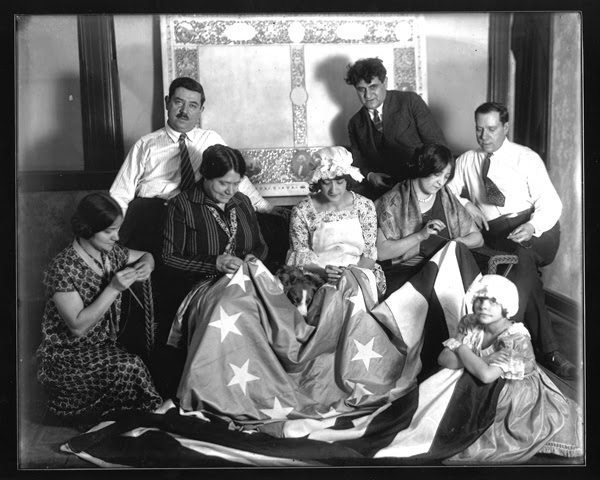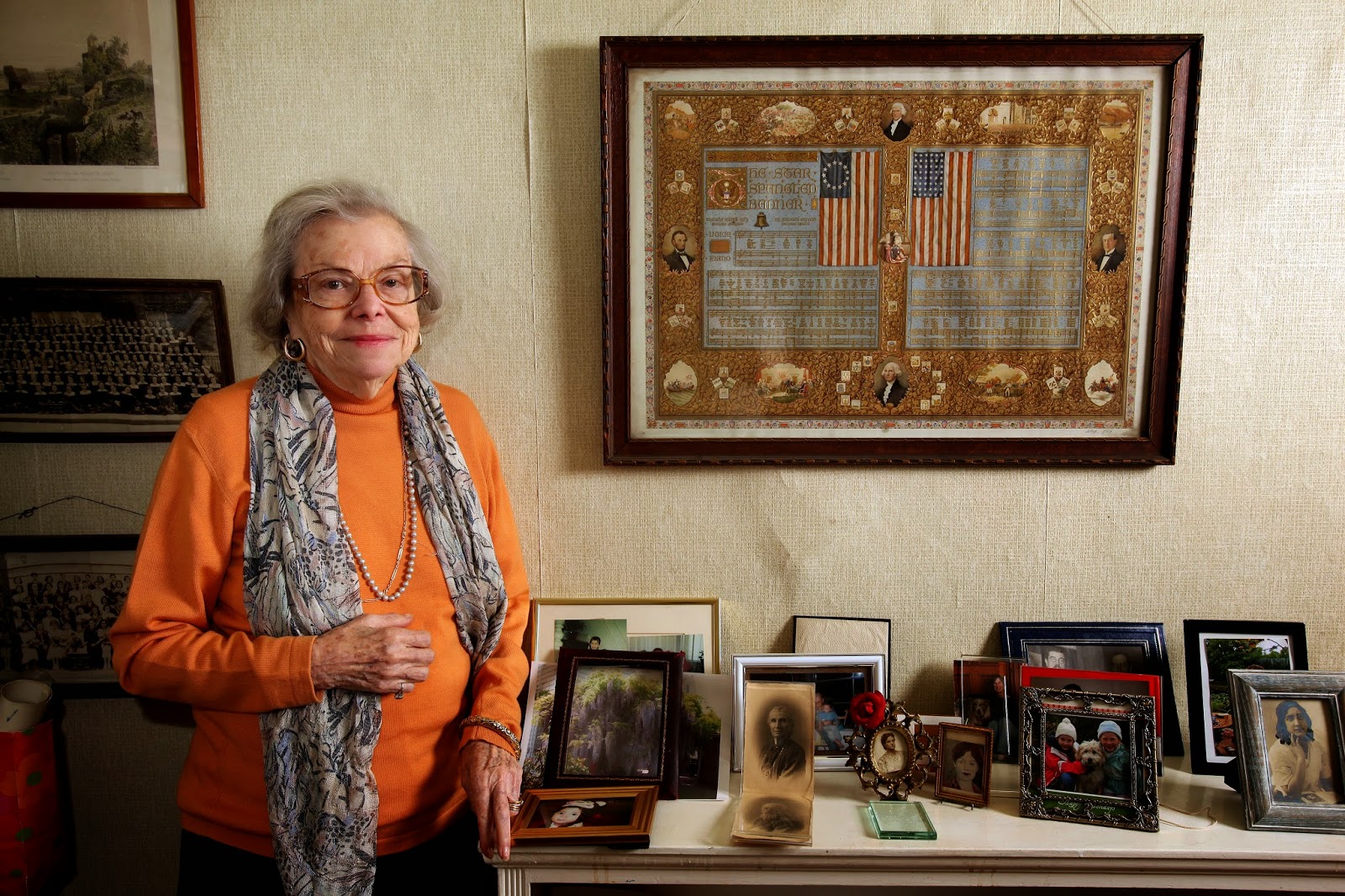An unusual artwork hanging in Duane Library commemorates America’s independence
When Dora Melina, UGE ’47, was going through a cabinet in her Brooklyn home some years ago, she found a glass-plate negative of a family photo taken when she was 5. But it was no ordinary portrait.
Clad in a white bonnet and a colonial-style dress, Melina is pictured with a female relative posing as Betsy Ross, stitching an American flag draped across her lap. Her dark-haired Italian mother, father, uncle, and an artist friend of theirs complete the scene.
 Though she doesn’t remember sitting for it, Melina said the photo was likely taken to help promote Old Glory, a large-scale illuminated manuscript created by her father and uncle nearly a century ago to commemorate the 150th anniversary of the signing of the Declaration of Independence. Melina donated the piece to Fordham in 1987, and today it hangs on the top floor of Duane Library on the Rose Hill campus.
Though she doesn’t remember sitting for it, Melina said the photo was likely taken to help promote Old Glory, a large-scale illuminated manuscript created by her father and uncle nearly a century ago to commemorate the 150th anniversary of the signing of the Declaration of Independence. Melina donated the piece to Fordham in 1987, and today it hangs on the top floor of Duane Library on the Rose Hill campus.
A Lost Art Form
“I’m really happy; they did a beautiful job setting it up,” said Melina, 95, who keeps a copy of the piece hanging in her den. “I wanted it to be somewhere where it’s safe,” she said, adding that the piece offers young people a glimpse of a lost art form. “They really don’t know anything about it unless we talk about it.”
A Family Committed to Arts Education
An artist herself, Melina had been taking art classes at Pratt Institute, but found it “difficult to be at a drawing board all day and night.” Her husband, Fortuny Robert Melina, FCRH ’41, GSAS ’49, suggested she attend Fordham.
“I was so in love with some of the things he was learning [there],” she said. She began taking night classes at the former Undergraduate School of Education’s home on lower Broadway, near City Hall, during the 1940s and completed her degree at Rose Hill when the school moved there. She taught elementary school in Bedford-Stuyvesant and later became a guidance counselor.
“What I loved about Fordham was the scholastic philosophy,” Melina said. She enjoyed studying literature and the philosophers, especially St. Thomas Aquinas.
But she took care to note that she is not religious and did not go to church, even as a child. Her family was “anticlerical,” she said, “like most of the artists of that era.”
They were however, very devoted to the study of art. Together with other artists from Italy, the Mungo brothers founded and taught at the Leonardo da Vinci Art School, known simply as “the Leonardo.” The low-cost school opened in 1923 in the East Village, and counts among its students famed sculptor Isamu Noguchi. It later moved to 34th Street, and closed in 1942.

